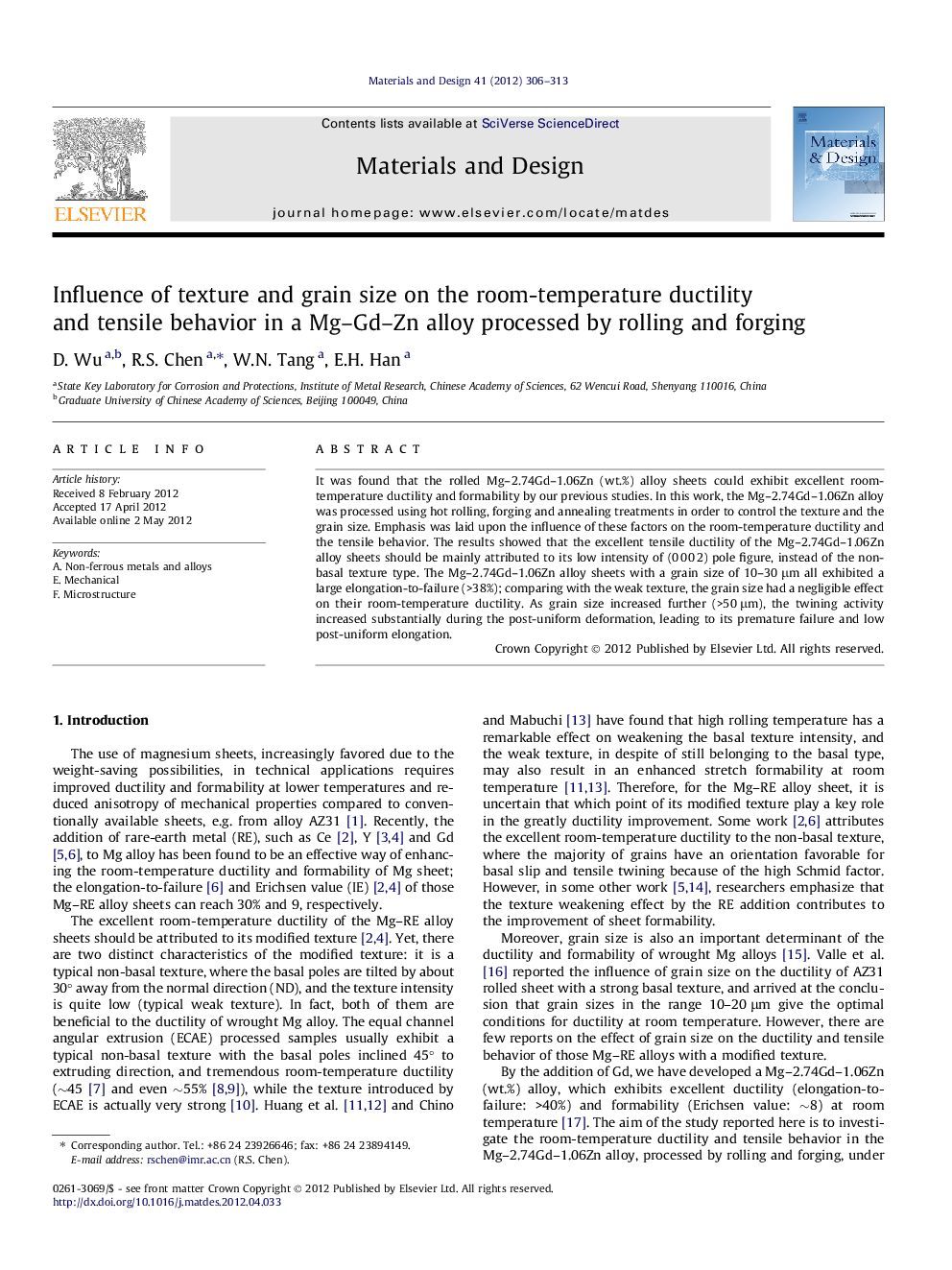| Article ID | Journal | Published Year | Pages | File Type |
|---|---|---|---|---|
| 830549 | Materials & Design (1980-2015) | 2012 | 8 Pages |
It was found that the rolled Mg–2.74Gd–1.06Zn (wt.%) alloy sheets could exhibit excellent room-temperature ductility and formability by our previous studies. In this work, the Mg–2.74Gd–1.06Zn alloy was processed using hot rolling, forging and annealing treatments in order to control the texture and the grain size. Emphasis was laid upon the influence of these factors on the room-temperature ductility and the tensile behavior. The results showed that the excellent tensile ductility of the Mg–2.74Gd–1.06Zn alloy sheets should be mainly attributed to its low intensity of (0 0 0 2) pole figure, instead of the non-basal texture type. The Mg–2.74Gd–1.06Zn alloy sheets with a grain size of 10–30 μm all exhibited a large elongation-to-failure (>38%); comparing with the weak texture, the grain size had a negligible effect on their room-temperature ductility. As grain size increased further (>50 μm), the twining activity increased substantially during the post-uniform deformation, leading to its premature failure and low post-uniform elongation.
► The forged GZ31-F sample and R-A38 sheet both present excellent ductility. ► The excellent ductility of GZ31 sheet is mainly attributed to its weak texture. ► The grain size has a negligible effect on its uniform elongation of GZ31 sheet.
